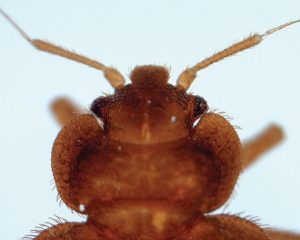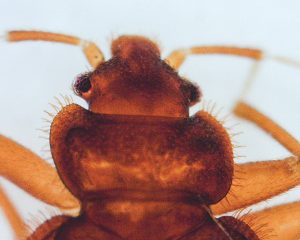- The Great Bed Bug Resurgence involves at least two species of bed bugs.
- Tropical bed bugs look like common bed bugs, but there are some differences in appearance and biology.
There are two species of bed bugs participating in the resurgence that has dominated the field of urban pest management: the common bed bug (Cimex lectularius) and the tropical bed bug (C. hemipterus). Both are found in a number of regions around the world, but it seems that one or the other is dominant.
The dominant bed bug in Singapore and Malaysia is the tropical bed bug; common bed bugs are rarely found there (How and Lee, 2010). In the U.S., the common bed bug is dominant and tropical bed bugs are rarely documented. It is thought that the warmer, more humid environment favors the tropical bed bug, which accounts for its dominance in tropical regions. But the biology and habits of both species have many similarities: An infestation of one looks much like an infestation of the other.
Tropical bed bugs have almost certainly been brought into the U.S. the same way common bed bugs have been brought in. Considering that they both live within human environments, the interior temperature and humidity should allow both to become established. While more research is needed on the tropical bed bug, there is no reason to believe it has not become established in the U.S. Anyone who has visited multi-family housing can attest that high temperatures and humidity are quite common. Also, in some regions, travel to and from Southeast Asia is common.
The two species are quite similar in appearance, with the main differences being the shape of the pronotum (the plate-like structure that covers from neck to abdomen). It is difficult to identify which species you have by looking at a single bug. When several bugs are placed side by side under magnification, however, it becomes much easier to tell the difference.
Although similar in appearance, there are differences in environmental preferences, developmental times and behavior. A recent study (How and Lee, 2010; Med Vet Ent, 24:108-116) demonstrated that tropical bed bugs produce an average of 50 eggs per female. The eggs develop to adulthood in about 17 to 20 days. Compared to recent studies of common bed bugs, the tropical bed bug produces fewer eggs, but completes development faster.
Unfortunately, developmental times can vary a great deal at different temperatures, so it may be difficult to compare the results of different studies. It may not make much difference in how we treat them, but it could explain some of the questions surrounding regional distribution in the U.S. As research on both species progresses, hopefully we will get a clearer picture.
Contributor Mark Sheperdigian, BCE, can be reached at sheperdigian@rosepest.com.


Just for clarification, the tropical bed bug is the most prevalent species between the latitudes of roughly 30 degrees north and 30 degrees south. Thus in addition to Singapore and Malaysia, this also includes Africa, India, Australia, and some of the first reports of the species were from South and Central America.
Stephen Doggett
Director Medical Entomology &
Principal Author, Australian Bed Bug Code of Practice
Thank you for this clarification, Stephen! —The Eds.